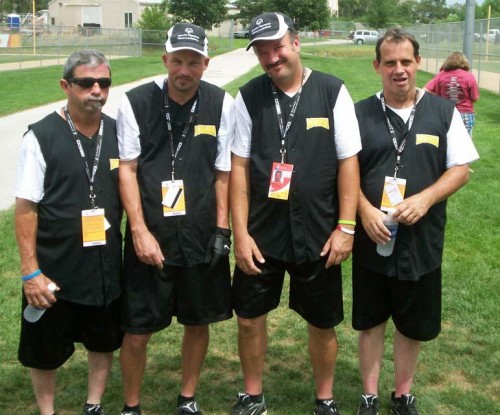
Terrebonne special athletes go for gold
September 21, 2010
Geraldine Spencer
September 23, 2010The drilling moratorium enacted after the BP oil spill applies only to the deepwater Gulf of Mexico. Yet energy exploration in the Gulf’s shallow waters has come to a virtual standstill as drillers grapple with tougher U.S. federal rules since the spill.
The pace at which regulators grant drilling permits in water less than 500 feet (150 meters) deep slowed sharply this summer, an Associated Press analysis of government data shows. Just four of 10 shallow-water drilling applications were approved from June through August; 15 applications were sought and approved in the same period last year.
Environmental groups are encouraged. But drilling executives say the new rules, which require them to produce detailed spill-response plans and estimates for worst-case scenarios, are adding millions of dollars in costs and causing delays that have led to layoffs. Executives worry that when the Obama administration lifts the six-month moratorium on deepwater drilling, where the risks are greater, the permitting process will be even slower.
These worries grew after the Sept. 2 fire on an oil and gas platform owned by Mariner Energy that was working in the Gulf’s shallow waters. Thirty-one out of 47 rigs used for shallow-water drilling in the Gulf will be out of work by the end of September, industry officials say.
“It certainly appears there’s some kind of agenda in place” to punish offshore drillers, says Kurt Hoffman, chief operating officer of Houston-based Seahawk Drilling, which provides drilling services in shallow Gulf waters. The company has laid off 200 to 300 workers since the BP spill.
Federal regulators say they’re sympathetic to the industry’s frustrations and they’re not trying to curtail drilling in the Gulf – only make it safer.
“We will not approve applications until and unless they fully comply with the new requirements,” Michael Bromwich, director of the Bureau of Ocean Energy Management, Regulation and Enforcement, said last week in a statement.
Bromwich told reporters that in response to the industry complaints, he might temporarily reassign employees from other offices to the Gulf to speed up permits for shallow-water drilling.
Shallow-water drilling has been the heart of the offshore industry for decades. Ninety-eight percent of the 3,400 platforms operating in the Gulf are in shallow water. They produce 30 percent of the Gulf’s oil and roughly two-thirds of its natural gas. In recent years, oil giants like BP and Royal Dutch Shell have pushed into deeper waters to find bigger oil and gas fields.
Immediately after the deadly April 20 explosion of the Deepwater Horizon, the government put in place a six-month moratorium on drilling at any depth. On June 8, it lifted the moratorium on new shallow-water drilling.
The AP analysis of government data shows that, from 2007 until just before the BP spill, 605 shallow-water permits were submitted and 576 were approved. From January through April of this year, 45 permits were sought and 44 were approved.
Still, over time the vast majority of drilling applications are likely to be granted – it’s just that the process will take longer, according to Melissa Schwartz, a spokeswoman for the ocean energy management agency.
The reduction in applications in recent months is a reflection of drillers’ uncertainty about the new rules, industry officials say.
And drillers say complying with the new rules hasn’t been easy. They must hire independent experts to review well designs and certify that spill-prevention equipment – the very equipment that failed BP – will stop the flow of oil if there is an accident.
The government has held weekly conference calls with oil industry officials to explain the new rules. Still, industry officials say they remain perplexed by some requirements – like how to calculate worst-case spill scenarios for an exploratory well.
“We just started asking them, ‘Tell us what you want,'” says Seahawk’s Hoffman. “It’s still really confusing.”
Shares of shallow-water drillers have tumbled sharply since the BP spill. Seahawk shares are down 59 percent; those of another driller, Nabors Industries, are off 14 percent.
Shallow-water wells are considered less risky than deepwater wells, and easier to repair if damaged because they can be reached by divers.
But major accidents have happened in shallow water. The 1979 Ixtoc oil spill – the biggest in the Gulf until the Deepwater Horizon disaster – was caused by the blowout of a well in just 160 feet (50 meters) of water. Last year’s Montara spill off the western coast of Australia was caused by an explosion on a rig in 250 feet (75 meters).
The deepwater moratorium is in effect until Nov. 30, though regulators have indicated they’re considering lifting it earlier.
Environmentalists say the government should remain stingy about approving drilling permits.
After enjoying a cozy relationship with regulators for generations, the industry is finally facing a tough posture from the government, says Kieran Suckling, the director of the Center for Biological Diversity in Tucson, Arizona.
“They’re just going to have to get used to it,” Suckling says. “The cowboy days of the oil industry running (the government) are over.”








